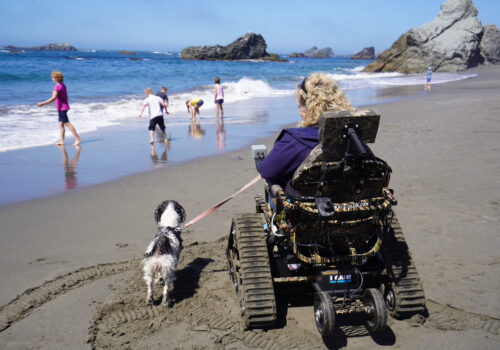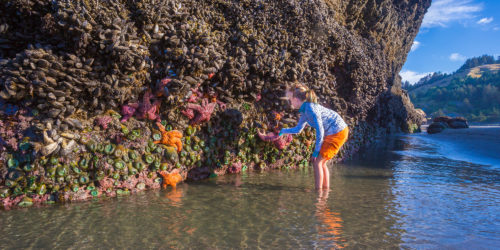Watch herds of the state’s largest land animal at several viewing points.
The majestic elk occupies a unique place in the Oregon landscape in more ways than one. Two subspecies of this creature, which falls in the size spectrum between a deer and a moose, call the Beaver State home. You can even see one on the Oregon state flag, a bull elk with an impressive spread of antlers.
Sightings of the state’s largest land animal and the second-largest member of the deer family, the Roosevelt elk are common across the Oregon Coast. To help plan your next sightseeing adventure, here’s more on where to see them on the Oregon Coast, how to watch them safely and why fall is such a fascinating time to spot these regal animals.
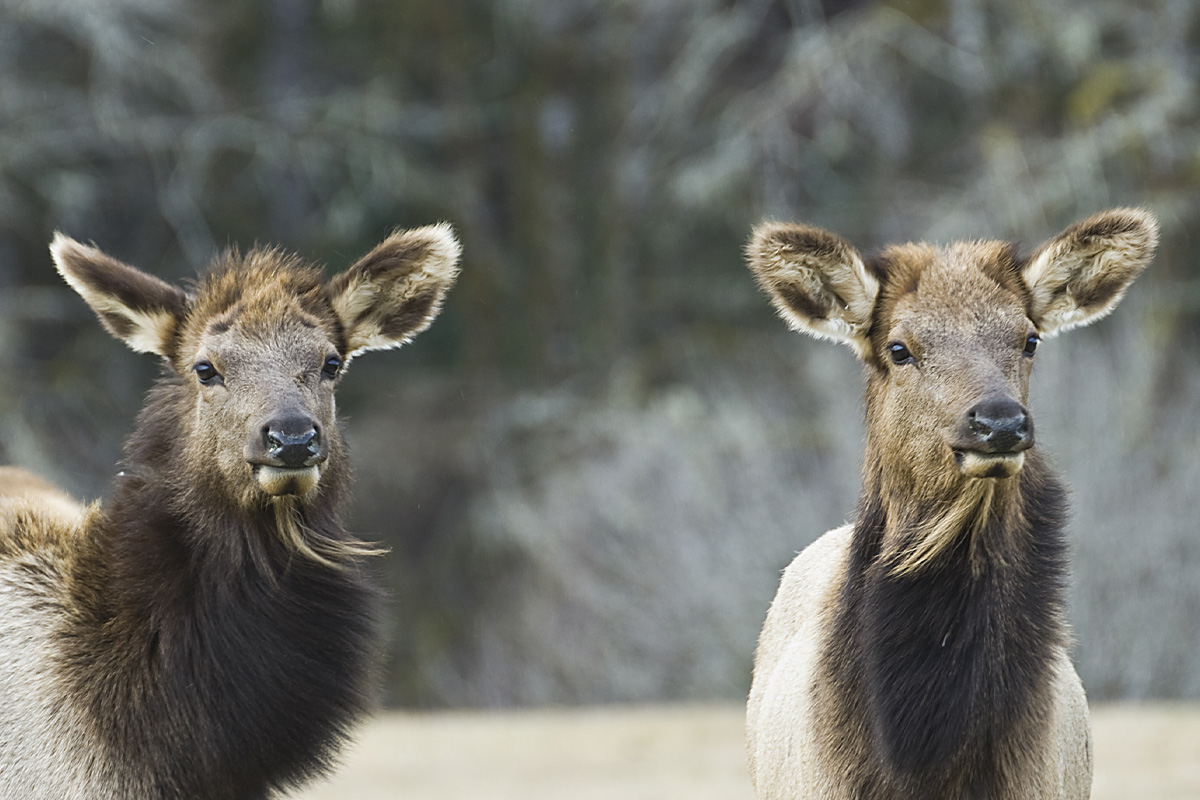
Identifying Elk on the Oregon Coast
Roosevelt elk are commonly seen in meadows, grasslands and creek drainages throughout the Oregon Coast. Mature bulls typically weigh between 700 and 1,100 pounds, and cows can weigh up to 700 pounds. Only bulls grow antlers, which they shed every spring. Elk are occasionally confused for deer, but elk are usually much larger — sometimes twice the size — and sport a shaggy, dark-brown mane with a lighter-brown body.
The period between September and October is an especially exciting season to spy Roosevelt elk. This stretch is what’s known as the rut, when males compete with each other for the chance to mate with the herd’s cows. As part of the ritual, you might hear a bull’s piercing bugle call, and you may see males lock antlers to demonstrate their strength.
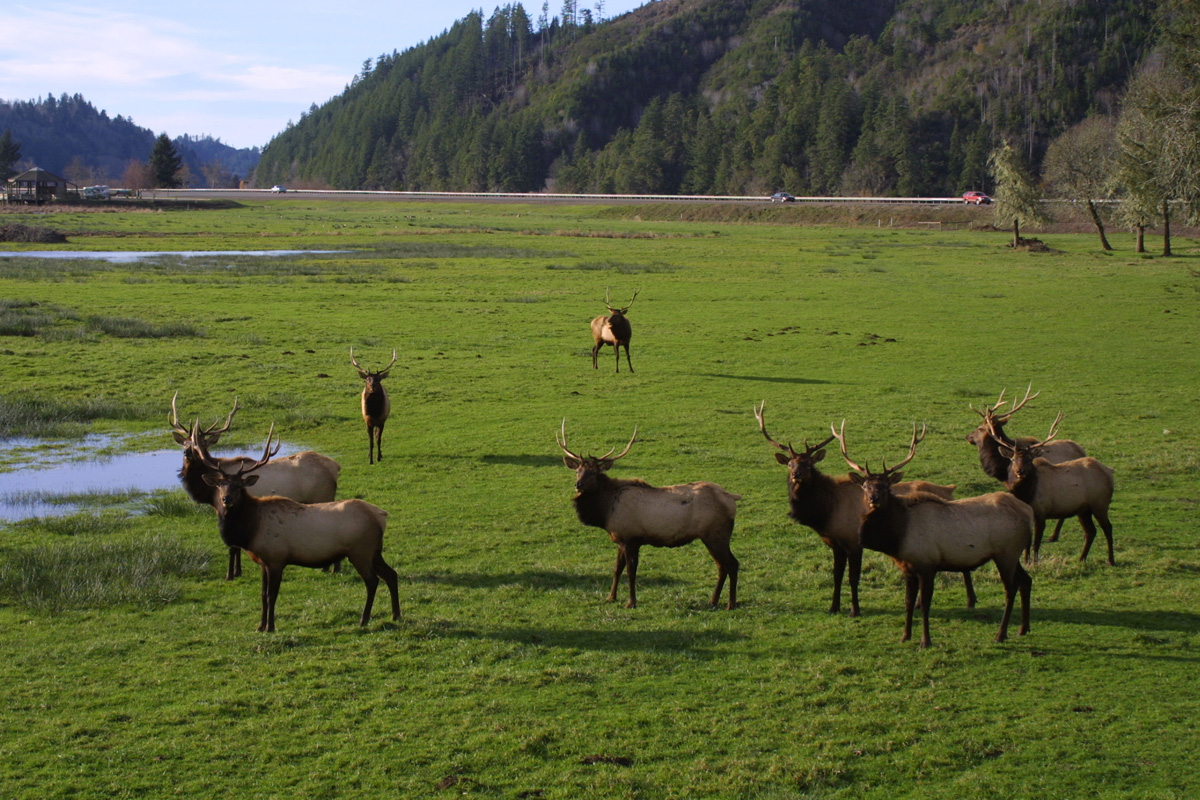
Top Places to See Elk
Just inland from Reedsport, the Dean Creek Elk Viewing Area offers several pastures that host a herd of 60 to 100 elk that can be seen year-round. A few roadside pull-outs provide safe and accessible viewing, and an interpretive kiosk offers more insight.
On the North Coast, resident elk enjoy grazing in the meadows and grasslands just west of the Ecola Point Day-Use Area at Ecola State Park near Cannon Beach. South of Astoria, a number of elk reside in roadside meadows around Fort Stevens State Park and Lewis and Clark National Historical Park. There the National Park Service monitors a historic herd whose ancestors provided sustenance for the area’s Clatsop tribes, as well as Lewis and Clark’s Corps of Discovery when they spent the winter of 1805-06 at Fort Clatsop.
Roughly 27 miles southeast of Astoria, the Jewell Meadows Wildlife Area sits along State Route 202. Between November and April, a herd of roughly 200 elk rest and feed in the meadows — and can be seen from four roadside viewpoints. Get a closer look with the Oregon Department of Fish & Wildlife’s free feeding tours, typically offered six days per week between December and February. Reservations are required and can be made, starting in December, by calling 503-755-2264.
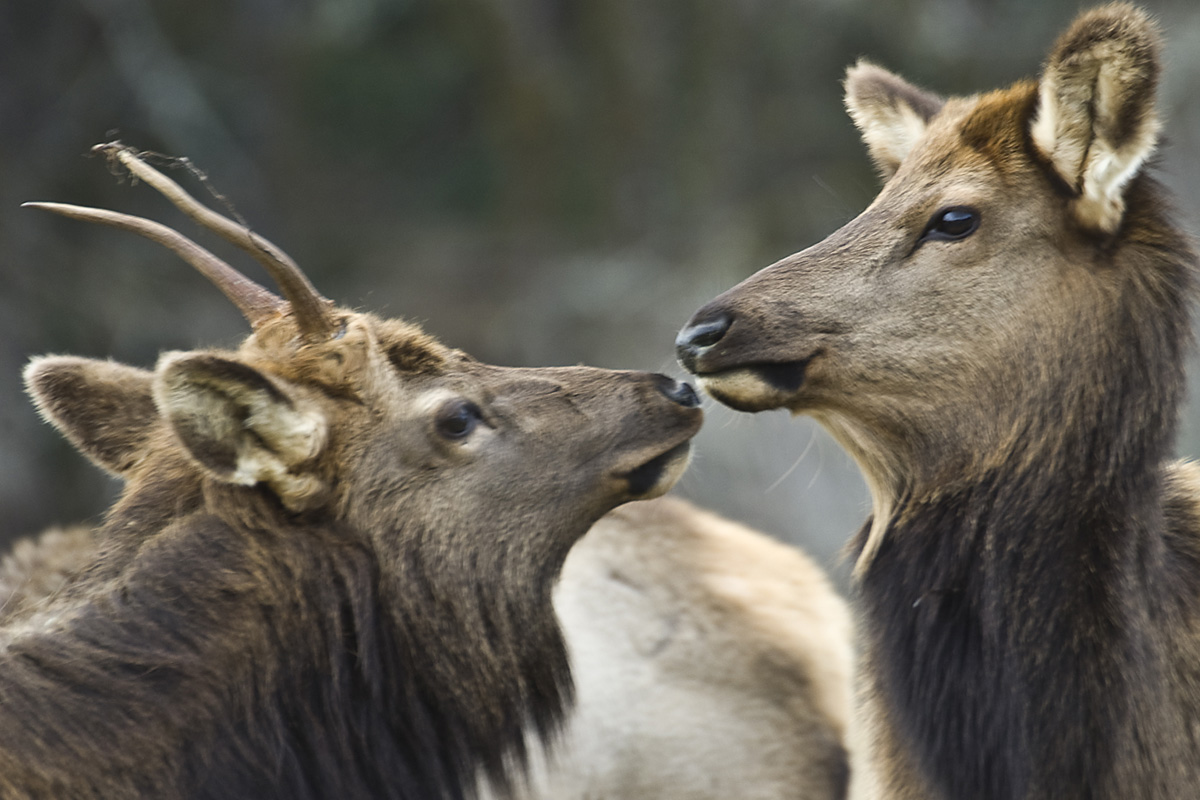
Staying Safe and Protecting Oregon Coast Wildlife
Keep at least 75 feet away from elk — roughly two bus lengths — at all times. In particular, herds will occasionally graze in green spaces around Warrenton, Hammond, Gearhart and Cannon Beach between fall and spring. We understand the urge to get close for that perfect photo, but always be mindful of the distance between you and the elk. Keeping your distance is especially important during the fall rut, when bulls are more aggressive while protecting their harem.
Plan a sightseeing trip around sunrise or sunset, when elk are most active, for the best chance to see a herd. Elk typically retreat into forests on both sunny days and also in heavy wind and rain — so aim for a mild day, if possible.
Stay safe around elk by staying in your car if you do run across them along or on a roadside. Elk have approached cars, so it’s a good idea to keep your windows closed. Be patient and, instead of honking your horn, let them continue along their way if they are in the road. If you scare the elk, they might damage your vehicle or nearby property.
Never feed elk. Human food can harm the animal’s digestive system and get the elk used to being around people, which can have numerous negative impacts on local ecosystems.
Finally, always keep your pet leashed when viewing elk, no matter the distance.
Wherever you go to view elk, be sure to Coast Like a Local by planning ahead, safely viewing wildlife, keeping your dog safe and taking other mindful actions on your Oregon Coast trip.
– By Matt Wastradowski
Top photo: Dean Creek Elk Viewing Area courtesy of Travel Oregon
in Wildlife

